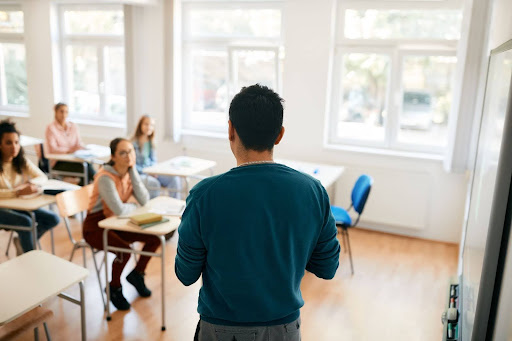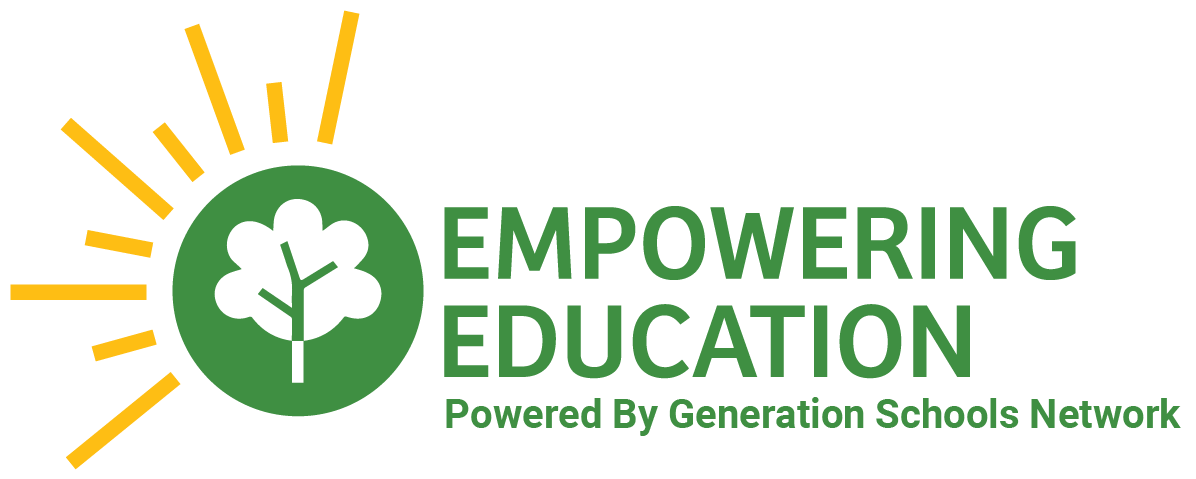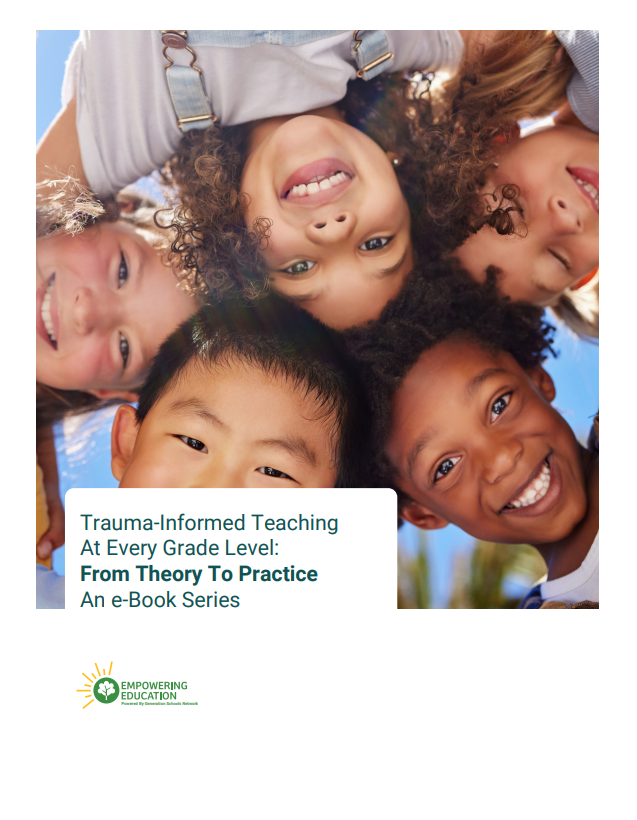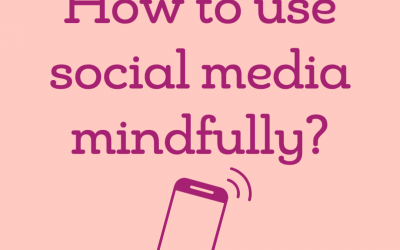
Trauma-Informed Teaching Strategies for High School
Resources and Curriculum for Supporting High-Schoolers Well-being
High school is a critical period in a young person's life, marked by significant academic, social, and emotional development. Unfortunately, by the time they reach high school, many students have already faced various forms of trauma. Luckily, there are many trauma-informed teaching practices that educators can employ to help students thrive.
In this article we’ll cover:
- Defining Trauma
- The Importance of Trauma-Informed Teaching
- Trauma-Informed Teaching Strategies
- Curriculum Resources for Teachers
A Working Definition of Trauma
From a scientific perspective, trauma is defined as an event, or series of events, that overwhelms the central nervous system. This typically occurs when one’s active response to a threat does not work. Still, to completely understand the nuances of trauma, a primer on the nervous system and the fight-or-flight response is needed.
More generally speaking, trauma is often defined as a deeply disturbing event or experience. This of course is subjective, since what one person might consider a traumatic event may be different for others.
Additionally, it’s important we recognize more subtle and insidious forms of trauma. These are not natural disasters or acute accidents, but chronic stress such as neglect, abandonment, and vicarious trauma.
In any case, trauma is a normal response to an abnormal situation. The dissociative experience of trauma is a way of coping with overwhelming stress when no other solution is present. Conversely, the more agency or choice that someone has in an overwhelming situation, the less likely they are to develop post-traumatic stress disorder (PTSD).
Why Does Trauma-Informed Teaching Matter?
When you hear the word trauma or PTSD what is the first thing you think of? For most, the immediate association is of veterans who are chronically on high alert. What you may not immediately think of are kids in our public school system. However, we need only look as far as the prolific ACE’s study to see evidence of the far-reaching impact of childhood trauma.
The majority of people suffering from chronic stress and traumatic stress disorders are actually children.
Unfortunately, exposure to trauma hinders students’ ability to learn and thrive at any age, especially in high school. In fact, students who are exposed to chronically stressful and overwhelming experiences like abuse, neglect, or household dysfunction tend to exhibit the following:
- underperforming academically
- difficulty focusing and relating to others,
- extreme and volatile emotional reactions that can disrupt an entire classroom.
In order to manage students’ behavior while supporting their well-being, we must empower K-12 educators with a trauma-informed approach.
Free Trauma-Informed High School Resources
Our comprehensive, mindfulness-based social & emotional learning curriculum equips you and your students with all of the tools you need to reduce the impact of trauma and improve student outcomes. Enhance your trauma-informed teaching practices by using our step-by-step lessons in your classroom today.
Trauma-Informed Teaching Strategies
Best Practice #1: The Power of Choice
In simple terms – the most traumatic situation is one where all choice is taken from us.
Sadly, teachers and administrators with positive intentions regularly create these types of situations in schools when they remove student choice. While a small choice around academics or a ‘minor’ discipline proceeding may not seem like a big deal to adults, it is important to remember that trauma is subjective.
Trauma can result from real or perceived threats. We can imagine, for instance, how failing an assignment or being forced into a punitive consequence without having a chance to make reparations could feel ‘life or death’ to a student with trauma.
It is a critical best practice for educators and other adults working with traumatized youth to provide ample opportunity for choice – particularly in moments of escalation and high stress. Whenever possible, provide students with choice and ‘a way out.’ This will create a safer classroom environment and minimize explosive outbursts from students who have experienced trauma.
Best Practice # 2: Leveraging Mindfulness

While every student, classroom, and school is different, research shows many benefits of teaching trauma-informed mindfulness in your classroom. These benefits range from improved academic performance and enhanced memory, attention, and learning to improvements in classroom culture, and relationships, and an increase in positive emotions.
Proceed with Caution
While the benefits of mindfulness are indeed promising, care needs to be taken when teaching mindfulness to someone who is currently experiencing trauma (or has experienced trauma in the past). The essential function of mindfulness is to improve attention and awareness of both internal and external stimuli (thoughts, emotions, behaviors, sensations, and environmental cues).
One could imagine that increasing awareness in a chaotic, unpredictable, and painful situation could be difficult at best, and counterproductive at worst. As Dr. Bessel van der Kolk, a leading expert on trauma, points out “mindfulness is only useful if it is accompanied by self-love and self-compassion.” In other words, we do not want to teach mindfulness to survivors of traumatic experiences without also teaching them how to hold those difficult experiences with compassion.
Best Practice # 3: Start with Yourself
So, how can you bring mindfulness to your high-school classroom while remaining sensitive to the needs of all students?
The best place to start is with yourself. In fact, research has demonstrated that students of teachers who have their own mindfulness practice but do not teach mindfulness in the classroom still experience the academic, social, and emotional benefits of mindfulness. Even further, students of teachers who teach mindfulness but do not have their own personal practice tend to get worse on almost all measures.
Best Practice # 4: Internal Monitoring
A large part of a well-developed mindfulness practice involves bringing awareness to your emotional state from moment-to-moment.
The more that we pay attention to our internal state, the more we can choose to create a warm, receptive, and caring emotional environment for our students. While this may seem like a stretch at first, scientists have discovered that we actually possess specialized neurons (known as ‘mirror neurons’) that naturally attune and mimic the emotional states of those around us – particularly those in a caregiver role.
So, before seeking to change the emotions and behaviors of your students, reflect on how you are feeling in that moment and see if you can shift your experience first.
Best Practice # 5: External Modeling

Consider how subtle physical cues, including your body language, breath rate, pace of speech, tone of voice, and facial expressions, create reciprocal responses in your students and classroom culture.
Attempting to create order by using aggressive tones in the classroom, for instance, will actually have the opposite effect. Students will respond to these physical cues by becoming further escalated or fearful, creating a negative feedback loop that results in a decidedly unsafe classroom culture.
Instead, try shifting your physical presence to be more congruent with the type of response and culture you would like to create. The more calmness you can bring through a slower pace of speech, deeper and slower breaths, and calm gentle tones the more your students will feel safe and at ease.
Of course, this requires that you first have an awareness of what you are modeling externally from moment to moment. This type of awareness is generally only cultivated through an ongoing mindfulness practice.
One way to quickly bring awareness to your external modeling is to set a handful of random alarms on your phone throughout the day. Each time you feel it buzz, take a brief moment to check in with your physical sensations. How quickly are you speaking? Is your breath shallow or full? Is your posture open and receptive, or closed and guarded? Are you smiling or frowning? Notice how these small adjustments affect your students.
Best Practice # 6: Respond to Student Body Language
As we increase awareness of our own internal and external states, we also become more aware of these cues in others. Students are constantly communicating with us, mostly without any words at all. By paying attention to student’s body language we can adjust our interactions with them to be more appropriate.
A student with clenched fists, tight jaw, dilated pupils, rapid breathing, and furrowed brows, for example, is clearly experiencing a fight-or-flight response. These are all clear ways that the student is communicating “I’m not ready to talk. I don’t feel safe right now and I need space to calm down.” Listening to these cues rather than trying to override them could be the difference between a student calming down and an out of school suspension.
We may also encounter students who are unusually collapsed in their posture and presentation, overly tired and fatigued, experiencing frequent mysterious physical symptoms and are generally disengaged from the classroom experience. This is a strong indication that the student is experiencing emotional distress and needs extra support. Consider offering this student a movement break or some choice about their next task.
Trauma Informed Schools: Resources for Teachers
The impact of childhood trauma and chronic stress is one of the most pressing issues facing educators and society at large. Discover resources and a turnkey high school curriculum for teachers seeking to become trauma informed and recognize and address the unique needs to these learners.
These 6 teaching tips are simple ways that you can implement trauma-informed teaching strategies to improve your relationship with your students and enhance your teaching practice.







